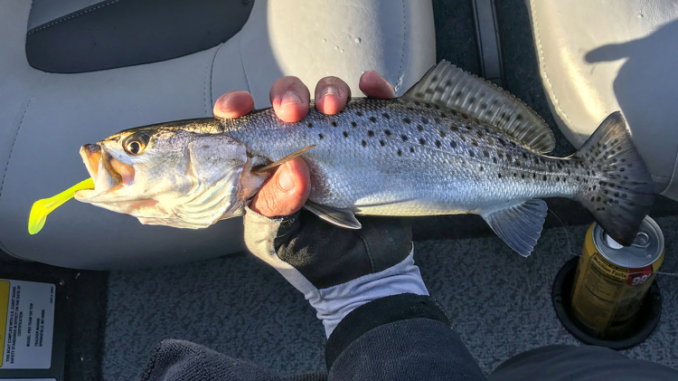
How to convince fish just following your lure to actually strike
Going to the marsh reminds me of going to a giant retail store, where I get to watch salesmen and customers interact in the same way anglers do with speckled trout and redfish.
And one of those strikingly similar interactions is the one between anglers and “following fish.”
So what is a “following fish”?
It’s a curious fish.
You know, one that’s there following your bait to the boat, before quickly turning around and disappearing to the depths.
At least you should notice it if you’re paying attention to your bait and, when you see it happen more than once, you’ll know you have a pattern.
Why was the fish following?
It’s pretty much on the fence about your bait: It didn’t want to bite, but it didn’t want to miss out on an opportunity, either.
It’s not different from a customer at the big box store who can’t decide whether to buy a certain product or not.
When that happens, a nearby salesman smells opportunity in the air, moving to gently coax the customer off the fence and into a purchasing decision.
But in the boat, you are the salesman and the fish is the customer, so for the close, just substitute the swipe of a credit card with a ride home in an icebox.
How do we get the fish to bite?
In a nutshell, you’ve got to change things up
The fish is following, but not committing, to the lure because it isn’t sure it’s worth the effort to strike. So you have to throw in a limited-time offer, a sweet discount or a free trial to close the deal.
There are three ways I recommend doing this:
1. Change your retrieve speed.
Changing the retrieve to a faster one may just be the trick.
Anglers tend to slow down when they see a following fish, and this rarely works because it allows the fish to take a closer look, give it a sniff, and decide to swim back where it came from.
I especially see this while sight-fishing redfish.
It’s better to speed up the retrieve so the fish can still get a good look — without getting too good of a good look.
It’s at that time when it may decide “it’s now or never,” then move in for the strike.
Of course, casts are free and it’s worth your time to make a couple with a slower retrieve. It could work.
2. Change your technique
By this I mean changing up how you’re retrieving the lure.
I was operating on the assumption that your retrieve is a steady one, always winding the reel at a steady rate.
But for this piece of advice, I am suggesting you add a sudden stop to the retrieve, a twitch of the rod — or anything that’s different from what you did before.
One time I had a problem with trout halfway striking, and not fully committing to the bait.
I was jigging soft plastics on a ledge and discovered that if I stopped jigging when they bit, and changed to a slow and steady retrieve, they came back and throated the thing.
This may not seem like a big deal, but consider all the different lure designs created to be retrieved in different ways.
Jerkbaits are a great example: they are not to be retrieved with the reel, but the rod. The reel is only used to take up slack between “jerks.”
3. Get stinky
I think scent is effective in convincing following fish to strike and honestly, it’s not rocket science. Just spray it on.
Shad is a favorite of mine and most inshore anglers, but I have found anise and garlic work well, too.
It’s been my experience that redfish respond to garlic, just as well as bass, and trout don’t seem to mind it, either.
I like garlic because it sticks, and I know it’s still there while water is washing over the lure.
Gulp spray is awesome, too.
Finer details
When I begin changing my retrieve and technique, I don’t make bold changes.
Whatever I’m doing to get the fish to follow is obviously working, so I don’t want to deviate too far from that. Instead, I make small, incremental changes.
This has been successful for me, and hopefully it will be for you as well.
If you have your own advice to share, please do so in the comments below.
Tight lines, y’all.
Editor’s Note: Devin Denman is an avid inshore fisherman who writes the Louisiana Fishing Blog. To read more of his articles, visit lafishblog.com.


